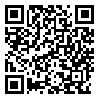Volume 11, Issue 10 (1-2014)
Nursing and Midwifery Journal 2014, 11(10): 0-0 |
Back to browse issues page
Download citation:
BibTeX | RIS | EndNote | Medlars | ProCite | Reference Manager | RefWorks
Send citation to:



BibTeX | RIS | EndNote | Medlars | ProCite | Reference Manager | RefWorks
Send citation to:
Rassouli M, Zamanzadeh V, Abbaszadeh A, Nikanafar A R, Alavi-Majd H, Mirza Ahmadi F et al . PATIENT-CENTERED COMMUNICATION BARRIERS: EXPERIENCES OF PATIENTS WITH CANCER, THEIR FAMILY MEMBERS AND NURSES. Nursing and Midwifery Journal 2014; 11 (10)
URL: http://unmf.umsu.ac.ir/article-1-1640-en.html
URL: http://unmf.umsu.ac.ir/article-1-1640-en.html
M. Rassouli * 
 , V. Zamanzadeh
, V. Zamanzadeh 
 , A. Abbaszadeh
, A. Abbaszadeh 
 , A. R. Nikanafar
, A. R. Nikanafar 
 , H. Alavi-Majd
, H. Alavi-Majd 
 , F. Mirza Ahmadi
, F. Mirza Ahmadi 
 , A. Ghahramanian
, A. Ghahramanian 


 , V. Zamanzadeh
, V. Zamanzadeh 
 , A. Abbaszadeh
, A. Abbaszadeh 
 , A. R. Nikanafar
, A. R. Nikanafar 
 , H. Alavi-Majd
, H. Alavi-Majd 
 , F. Mirza Ahmadi
, F. Mirza Ahmadi 
 , A. Ghahramanian
, A. Ghahramanian 

Abstract: (8800 Views)
PATIENT-CENTERED COMMUNICATION BARRIERS: EXPERIENCES OF PATIENTS WITH CANCER, THEIR FAMILY MEMBERS AND NURSES
Rassouli M ,Zamanzadeh V ,Abbaszadeh A ,Nikanafar AR ,Alavi-Majd H ,
Mirza Ahmadi F ,Ghahramanian A *
Received: 28 Aug, 2013 Accepted: 2 Nov, 2013
Abstract
Background & Aims: It is suggested that nurses unable to communicate with patients based on the needs and preferences and to individualize relationship with their patients so that dissatisfaction of patient is the most important outcome of this issue. This study was conducted for detecting patient-centered communication barriers based on experiences of patients with cancer, their family members and nurses.
Materials & Methods: This study was conducted with a conventional content analysis approach with nine patients, three family members and five nurses in oncology wards of Tabriz hospitals. Data was collected through purposive sampling by semi-structured deep interviews and analyzed simultaneously. Robustness of data analysis was evaluated by the participants and external control.
Results: Despite the willingness of patients and nurses for patient-centered communication, there are barriers that limit it. At the organizational context, workload and time imbalance, organizational culture: neglecting to nurses and patients needs, routine-based instead of patient-centeredness, extra shifts and lack of supervision and at the psychological context, emotional problems of patients due to cancer diagnosis and invasive treatments and sense of vulnerability in nurses resulted from emotionally and physically perilous sense of working with cancer patient was introduced. At the sociocultural context, language and gender differences, illiteracy, poor health literacy and misconceptions about therapeutic intimacy were identified.
Conclusion: In order to communicate with cancer patients, change in philosophy and culture of care environment is essential. Nurses must receive proper trainings conform to their needs which focus on holistic and patient-centered approach. Nursing administrators must monitor the communication functions of the nurses and pay attention to the personal and emotional needs of them.
Key words: cancer, patient-centered communication, barriers, qualitative content analysis
Address: Nursing and Midwifery School, Kerman University of Medical sciences, Kerman, Iran
Tel: (+98)09123879247
Email: ghahramaniana@gmail.com
Type of Study: Research |
Subject:
Nursing management
| Rights and permissions | |
 |
This work is licensed under a Creative Commons Attribution-NonCommercial 4.0 International License. |



 gmail.com, unmf
gmail.com, unmf